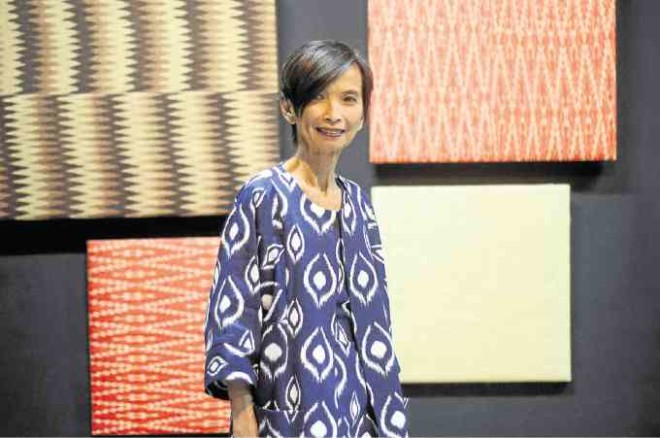
To sell one’s designs globally, one must successfully sell locally first.
Not only that, said Josie Cruz Natori, founder and CEO of the Natori Company; one’s creations must also have a “story”—a point of view delivered consistently that makes the product a unique experience for whoever takes it home.
The doyenne of women’s wear had just spent three hours one afternoon examining the works of aspiring young accessories designers at the head office of the Center for International Trade Expositions and Missions (Citem) in Pasay City.
Natori challenged an up-and-coming shoe designer to shift to bags. She then admitted to being “very impressed” by another “kid’s” collection of bags fashioned out of CDs and vinyl records. Later, she spent nearly 30 minutes scrutinizing what appeared to be genuine gold jewelry presented by a fresh-faced designer.
And to everyone she saw that time, Natori asked the same questions: “What are you trying to do here? What’s your story? Can you explain to me your point of view?”
“Every one of these kids has imagination,” she noted. “Now, it’s a question of understanding the marketplace to a level that would (help them) execute their designs.”
For example, a resourceful young woman who scoured
vintage shops for Marilyn Monroe’s likeness definitely has a plan. But how does she make creations pegged on that image become appealing to other markets beyond the customer who’s a fan of Marilyn?
Fashion know-how
Natori, of course, knows fashion is a multimillion-dollar business. Her ready-to-wear clothes, lingerie, accessories and home ware are available in high-end stores in the US as well as home TV shopping channels.
Being able to sell the products she has designed and conceptualized is why for the past seven years, Natori has been asked by Citem to mentor
Filipino young designers to help them translate creativity to a viable business venture.
“At the end of the day, who cares about good design if it doesn’t sell? I might think it’s so great but if there’s no market for it, why bother? To me, design and commerce go hand-in-hand,” she explained.
One advantage of Filipino designers wishing to enter the global market is the high level of craftsmanship among workers.
“To get a slice of the foreign market, we must take advantage of what is unique to the Philippines,” said Natori. “Our artisanship is what makes us unique. So our design sensibility has to exhibit that artisanship, that craftsmanship.”
She added that conquering the local market would be the smartest first step for anyone wishing to enter the international scene eventually.
“To me, the number one audience to satisfy is really the local market,” she said. “There is so much more appreciation for Philippine design within the local market and over the years, the local buyers have increased.”
64th Manila FAME
Natori pointed out that attendance at trade shows “everywhere around the world has gone down because people travel less… This goes for every other country. It’s a global thing that’s why Citem tries to go out and do trade shows in New York, Paris and other countries.”
Citem serves as the showcase arm of the Department of Trade and Industry’s efforts to promote Filipino products in trade shows all over the Asia-Pacific. On Oct. 20-22, Citem will put up the 64th Manila FAME’s “Objects Matter.”
It will have Natori curating its Manila Wear project, a branding initiative under Fashion Philippines to develop the local fashion industry into a more global force that combines artisanal crafts with contemporary sensibilities.
Natori, however, cautioned designers against going into mass production for the sake of business or going high-end for its own sake, stressing that a creator’s unique voice must always be distinct when presenting a collection especially in accessories.
“The difference between manufacturers and being design-driven is about developing a point of view that would be competitive,” she explained. “Developing a collection that is consistent and distinctly yours, something unique to you, I think the biggest step is to develop designers who have collections that stand for what they are.”